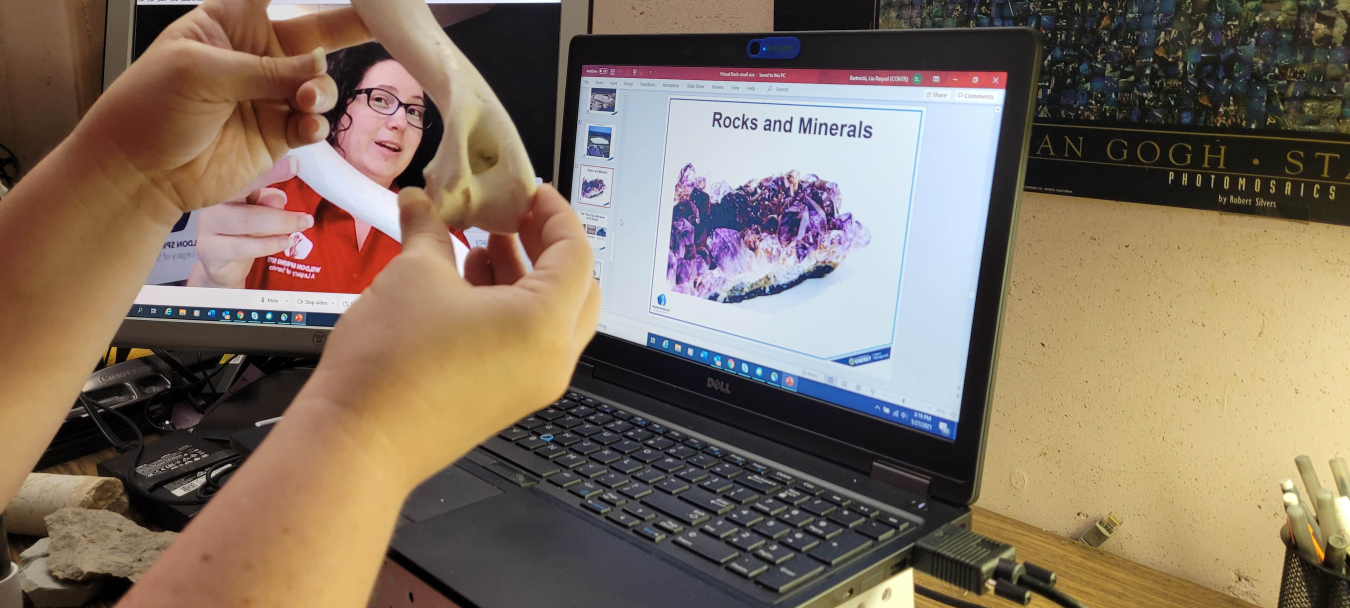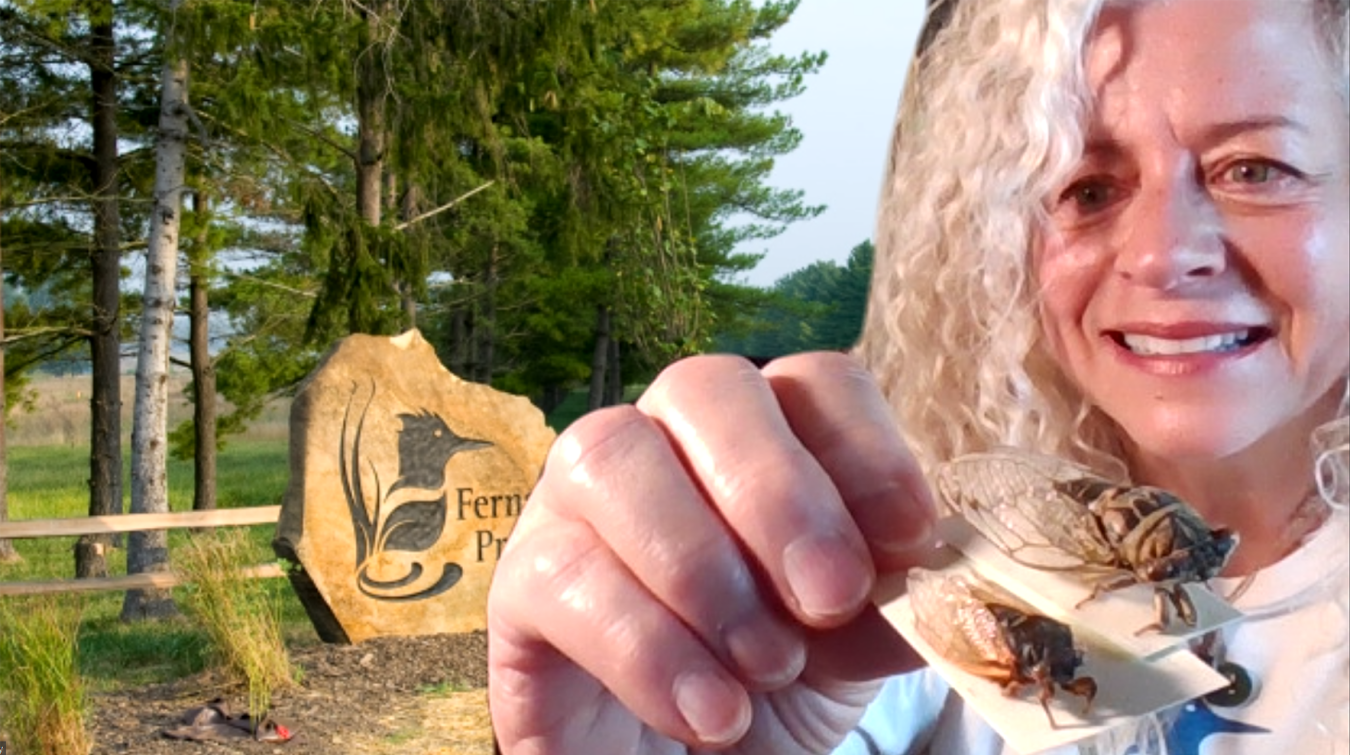A look back at one year of virtual programming.
June 8, 2021During the COVID-19 pandemic, the interpreters and educators at the U.S. Department of Energy Office of Legacy Management’s (LM) public interpretive centers did not let their passion for community outreach and science, technology, engineering, and math (STEM) education lay idle. Instead, they adapted and produced high-quality programming and educational opportunities for students, community members, and stakeholders in a new digital frontier.
The Weldon Spring Site Interpretive Center (St. Charles, Missouri), Fernald Preserve Visitors Center (Hamilton, Ohio), and Atomic Legacy Cabin (Grand Junction, Colorado) are LM’s three public-facing facilities where interpreters and educators provide programming and education on topics ranging from Cold War history to environmental remediation.
Weldon Spring Site Interpretive Center staff adapted their school outreach programs for remote presentation in a fully virtual format, making programs available for any school or community group. The “Solids, Liquids, and Gases” and “Rocks and Minerals” programs — some of the site’s most popular natural science programming — are in high demand among elementary schools, while site history programs are being requested by local conservation and professional groups.
Self-guided activities are available for the site’s outdoor trails and features, providing visitors with scientific and historic context for their surroundings. Journey to the Top: Self-Guided Disposal Cell Tour was produced to educate visitors on prominent human-made landmarks at the Weldon Spring Site. Prominent Prairie Forbs Planted at Howell Prairie assists amateur horticulturists with identifying the different species of plants in bloom at the site.

With the help of LM’s Weldon Spring Site Interpretive Center team, Lakeview Elementary second graders investigated different types of rocks and how they change over time.
At the Fernald Preserve Visitors Center, the interpretive team adapted to a virtual setting with a focus on ecology. The team created a brand new video series, AHA Nature Moments, the most recent of which focuses on this summer’s reemergence of the Brood X cicadas in southeastern United States.
The team’s most popular ecology video, Secret Lives of Wild Creatures at LM’s Fernald Preserve, Ohio, Site, showcases trail camera footage of the site’s wild animal residents with a special spotlight on the American beaver. Expanding on this tree-trimming critter’s fame, the team developed a self-guided, interactive webpage, The Great Beaver Dam Build-Off: Engineering… Naturally!, where visitors to the website can learn more, engage in at-home activities, and watch videos on one of Fernald Preserve’s most loved residents.
Community groups and schools booked virtual programs on ecology and site history with the team of educators and interpreters at Fernald Preserve throughout the year and a steady calendar of virtual programs is already booked well into summer 2021.

Staff at the Atomic Legacy Cabin (ALC) have also adapted to virtual engagement, participating in Nuclear Science Week 2020 and creating the Radiation – Energy in Motion informational video, which featured LM experts discussing the science of radiation. To accompany the video, the ALC interpretive team also produced materials for students and educators to participate in Nuclear Science Week.
To highlight the amazing history of the surrounding area, ALC interpreters created an interactive webpage, Atomic Legacy Discovery Guide: Colorado Plateau, for visitors to digitally learn about the history, geology, and ecology of the Four Corners region.
Virtual programming by the ALC team continues to book up quickly with involvement in many elementary schools and summer camps. The team’s “Aquifer in a Cup” and “The History of Uranium on the Colorado Plateau” programs are both popular choices. Most recently, ALC interpreters presented at the Ute Children’s Water Festival as well as the 2021 Waste Management Symposia.
Complementing the work being done by each of these regional interpretive centers, the STEM with LM program also began producing a library of at-home activities to engage curious minds. Most recently, the STEM with LM team celebrated Pi Day, complete with a recipe for no-bake coconut cream pie. In close collaboration with the ALC team, a three-part video series, Go With the Flow, was produced to educate on groundwater and well sampling at LM sites.
In another collaboration, the interpretive teams at the Weldon Spring Site and the Fernald Preserve contributed their expertise on how to Be a Clever Birder, just in time to participate in the Great Backyard Bird Count.
Community outreach, STEM education, and stakeholder engagement are major components of LM’s mission at sites with public interpretive centers. The last year of working, engaging, and educating remotely presented new opportunities to reach new audiences, even after visitors are welcome back through the doors of our public interpretive centers. Until then, our interpreters and educators can’t wait to see you online!


